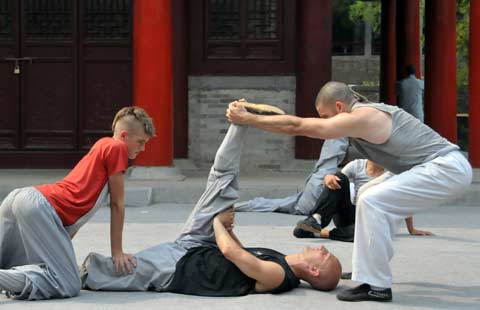Overseas-invested hospitals to push China's healthcare reforms
Updated: 2014-09-01 11:17
(Xinhua)
|
|||||||||||
Overseas-invested hospitals generally provide better service and can ease the shortage of high-end medical institutions in Beijing, said Zhong Dongbo, deputy head of the Beijing Health and Family Planning Commission.
What China's medical market needs is advanced management expertise, service, equipment and technology, said Pan Zhongying, president of Beijing United Family Hospital, which was founded in 1997 and is now China's largest overseas-invested healthcare provider.
Wholly overseas-funded hospitals play a supplementary role in China's healthcare sector, according to Zhuang Yiqiang, deputy secretary general of the Chinese Hospital Association.
Chen Yude, professor with Peking University's Health Science Center, expects the competition following the entry of overseas-owned hospitals to push forward the reform of China's public healthcare institutions.
Chen said overseas-invested hospitals will deal a blow to their local counterparts since they will scramble for not only patients, but also talented medical staff.
Overseas-invested hospitals mainly serve foreigners working or living in China and high-income Chinese citizens, while China's healthcare sector is expected to be worth 8 trillion yuan ($1.3 trillion) by 2020.
According to the National Health and Family Planning Commission, non-public healthcare institutions account for 47 percent of the country's total. However, the number of beds they provide takes up only 11 percent and the ratio is expected to reach 20 percent by 2015.
Public hospitals provide 90 percent of China's medical services. Most Chinese patients like to go to large public hospitals in big cities for medical treatment, leading to their overcrowding.
In terms of funding and service quality, wholly overseas-funded hospitals are superior to local private ones, said Cai Jiangnan, a healthcare researcher with the China Europe International Business School in Shanghai.
"[The new ruling] is a good thing for ordinary people because overseas-funded hospitals will be a competitor for Chinese private and public hospitals," he said.
But others note challenges that new private hospitals will face, and say that there needs to be development in related fields if private healthcare is to really take off.
Ordinary people have to first face the relatively high prices in overseas-funded hospitals. Currently, such costs cannot be covered by their basic medical insurance.
Shanghai Landseed International Hospital, founded in 2002 and owned by Taiwan investors, has capacity to receive 800 to 1,000 patients for clinical services each day, but the real number is only 300 to 400.
"The service is good there, but the costs cannot be covered by our medical insurance. The hospital is for the rich," said a Shanghai resident who declined to be named.
Given the market-oriented pricing of overseas-funded hospitals, China should encourage the development of the commercial health insurance industry to relieve the pressure on individuals who only have basic medical insurance, said Liang Hong, vice president of the China Health Insurance Research Association.
Staff recruitment also poses a challenge for overseas-funded hospitals. Under Chinese law, overseas doctors practising clinical and treatment services in China must renew their registrations every year.
Since 2009, China has loosened restrictions on doctors in terms of their practising in multiple medical institutions. But the flow of medical staff in public hospitals still faces some barriers, according to experts.
"We must wait and see how the prospects for overseas-funded hospitals develop. The key lies in the overall further opening up and reform of China's medical service market," said Zhu Hengpeng, a public policy expert at the Chinese Academy of Social Sciences.
Hospital offers high-tech health services for capital's inmates
Shanghai FTZ to get Artemed hospital
Hospital head pleads for patience with medical reforms
Related Stories
China allows foreign-funded hospital in Fujian 2014-08-28 15:46
Rule change for foreign hospital investors 2014-08-28 15:28
Shanghai hospital aims to create healthy workplace 2014-07-02 07:51
Sunshine Life to set up hospital 2014-06-27 21:15
Today's Top News
Islamist militia now guards US Embassy in Libya
450 injured as protesters clash with police in Pakistan
Putin calls for talks on state system in eastern Ukraine
IMF chief Lagarde investigated in graft case
Cameron urges Scotland to stay
Obama says 'no IS strategy yet'
China calls for ceasefire in Ukraine
Girl, 9, kills shooting range instructor
Hot Topics
Lunar probe , China growth forecasts, Emission rules get tougher, China seen through 'colored lens', International board,
Editor's Picks

|

|

|

|

|

|





